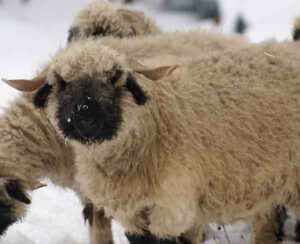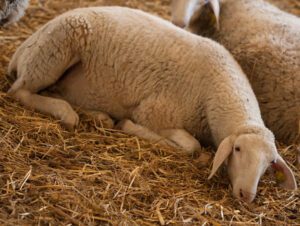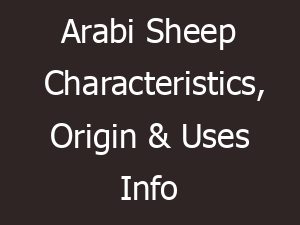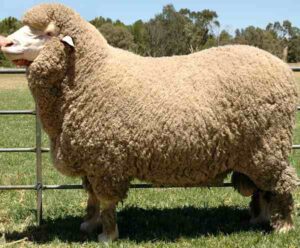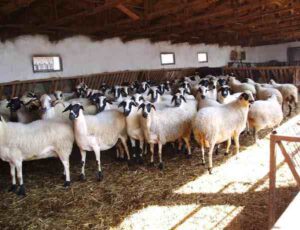The Askanian sheep (full name: Асканійська тонкорунна вівця) is a breed of domestic sheep from Ukraine. It is also known by some other names such as Askaniysky, Askanian Fine Fleece sheep and Ukrainian: Асканійський.
The breed was actually developed in the early 1900s at Askania Nova by crossing American Rambouillet with Merino. There were over 1.6 million Askanian sheep in 1980.
Today the breed is raised mainly for it’s fine quality wool. Read some more information about this Ukrainian sheep breed below.
Askanian Sheep Characteristics
The Askanian sheep are medium to large sized animals. They are mainly white and are unicolored with white face.
Their face is generally free of wool. The ewes are either polled or horned, but the rams are generally horned.

Average body height of the mature ewes is around 69 cm at the withers, and the rams are much larger than the ewes.
Average live body weight of the mature Askanian rams is around 115 kg. And the ewes are smaller than the rams. Their average live body weight is around 61 kg. Photo and info from Wikipedia.
Uses
This is a wool sheep breed. It is raised mainly for wool production.
Special Notes
The Askanian sheep are strong animals, and they are well adapted to their native climates. The ewes are good mothers, and they approximately produce around 1.27 lambs per litter.
Today the breed is raised mainly for wool production. Their wool is of very fine quality. However, review full breed profile of this breed in the following chart.
| Breed Name | Askanian |
| Other Names | Askaniysky, Askanian Fine Fleece sheep and Ukrainian: Асканійський |
| Breed Purpose | Mainly wool |
| Special Notes | Strong animals, well adapted and do well in their native climate, ewes are good mothers, the ewes approximately produce around 1.27 lambs per litter, today raised mainly for wool production, the wool is of very good quality |
| Breed Size | Large |
| Weight | Mature rams average live body weight is around 115 kg, and the mature ram’s average live body weight is around 61 kg. |
| Horns | Rams are horned, but the ewes are either horned or polled |
| Climate Tolerance | Native climates |
| Color | White |
| Rarity | Common |
| Country/Place of Origin | Ukraine |

